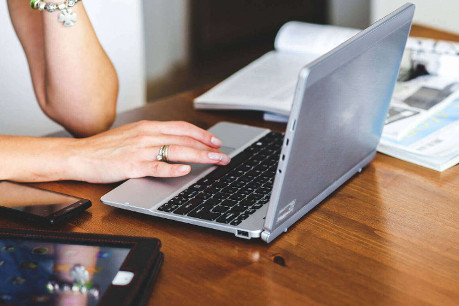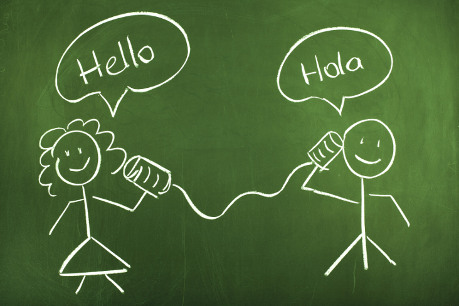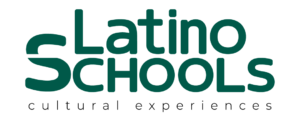Menu
Survival guides in Spanish: banks and money
In the survival guide: at the airport, we familiarized with the most common expressions used when arriving at the airports in Peru, Ecuador or Bolivia. We are sure that the stressful moment of landing in an airport in a country which language you don’t speak became a task so much easier and pleasant. But if you have moved into any of these countries, there is a central issue you probably have realized you need to know more about: the money. How to change money? How to open a bank account? How to buy in a shop? How to pay your bills?
Don’t get scared, we know all of this bureaucracy staff sounds like a nightmare but it is less when you know how to express your needs.
In this new chapter of Survival Guides, we present you with the background context, interesting facts and most common expressions used in these areas, learn Spanish with us while learning more about the economy!
Survival guides in Spanish: banks and money
The currencies
Of course the currency rates change every day, the amounts here are just to give you an idea about the current cost of living in Latin America.
Ecuador
Since 2000, Ecuador replaced the sucre to the US dollar.
1 US dollar = 0,88 euro cents (as of April, 2019).
Peru
In Peru, the currency is the Peruvian Sol.
1 US dollar = 3,30 soles
1 euro = 3,73 soles
Bolivia
The currency is the Boliviano.
1 US dollar = 6,90 bolivianos
1 euro = 7,81 bolivianos
The economies
Peru ranks as the fifth biggest economy of Latin America. Peru is also a big world exporter because of its vast quantity of natural resources, especially in terms of fishing and mineral and gas materials.
Let’s make ourselves an idea about the general cost-living in Peru by looking at these facts:
- A house in the city center (price per square meters) costs $1058/ €934.
- The average monthly salaries are $453/ €400.
- In the supermarket, Rice (1kg) = $1,12/ €0,99.
- Milk (1L) = $1,27/ €1,12.
- Tomatoes (1kg) = $1,06/ €0,93.
- Beef (1kg) = $6,44/ €5,69.
Ecuador is one of the Latin America countries that will experience economic growth in 2019. Some of the most important resources for the Ecuadorian economy are bananas, tobacco, cocoa, and tropical fruits.
Let’s look again at some common facts of the Ecuadorian economy:
- A house in the city center (price per square meters) costs $1.500/ €1.325
- The average monthly salaries are $520/ €459
- In the supermarket: Rice (1kg) = $1.27/ €1.12
- Milk (1L) = $0.95/ €0.84
- Tomatoes (1kg) = $1.21/€1.07
- Beef (1kg) = $5.90/ €5.21
Bolivia’s economy ranks as the 14th in Latin America. As the previous and most Latin America countries, Bolivia bases its economy in the extraction of their national resources. The country highlights for its mining exports mainly made up of zinc, silver, tin, gold, and lead.
To dive more into this:
- A house in the city center (price per square meters) costs $1.085/ €959
- The average monthly salaries are $477/ €422
- In the supermarket: Rice (1kg) = $1.20/ €1.06
- Milk (1L) = $0.91/ €0.81
- Tomatoes (1kg) = $1.01/ €0.90
- Beef (1kg) = $4.81/ €4.25
Well done, guys! You have made it until here and we are sure you have a much broader knowledge now about basic economic facts of these three beautiful countries.
Let’s go now to know more about banks and common transactions where you will have the chance to proudly exhibit your Spanish knowledge!
Asking for money change
In the Survival Guide: at the airport, we saw how to ask for money change at the airport. Check it out in this link:
Opening a bank account
There are several types of bank accounts, two of the most common are current and savings accounts. Here is a list of some of the most known banks in the three countries in which you will be able to open an account as a foreigner:
- Peru: Banco de la Nación, Banco Financiero del Perú, Banco continental BBVA.
- Ecuador: Banco Pichincha, Banco Guayaquil, Banco Machala.
- Bolivia: Banco Nacional de Bolivia, Mercantil Santa Cruz, Banco Crédito.
Take into account you may need your ID or other personal or financial documents to open a bank account. We encourage you to further investigate this matter and ask us in case of any doubt and we will gladly help you.
- I want to open a current/savings bank account – Quiero abrir una cuenta bancaria corriente/de ahorro
- What documentation shall I bring? – ¿Qué documentos debo aportar?
- How should I use the accounts? – ¿Cómo debo usar las cuentas?
- What important things should I know about the account? – ¿Qué cosas importantes debo saber sobre la cuenta?
Paying in shops
The simplest (and yet tricky) transaction of them all. Just as easy (or not) as going to the supermarket or any shop and buying something.
- How much is it? – ¿Cuánto cuesta?
- Thirteen S/$/Bs – Trece soles/dólares/bolivianos
- Here is your change – Aquí tiene su cambio
- I would like to return this… – Me gustaría devolver este/a…
Paying bills
Whenever paying a bill, and in case you would need to speak to your company about it, here are phrases you may need to use:
- There is an error in my bill – Hay un error en mi factura
- I didn’t receive my monthly bill – No me llegó la factura de este mes
- How much should I pay this month?- ¿Cuánto tengo que pagar este mes?
We hope you have enjoyed this session about banks and money! See you in the next!






